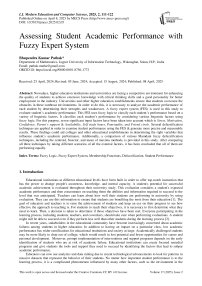Assessing Student Academic Performance with Fuzzy Expert System
Автор: Bhupendra Kumar Pathak
Журнал: International Journal of Modern Education and Computer Science @ijmecs
Статья в выпуске: 2 vol.17, 2025 года.
Бесплатный доступ
Nowadays, higher education institutions and universities are facing a competitive environment for enhancing the quality of students to achieve extensive knowledge with critical thinking skills and a good personality for better employment in the industry. Universities and other higher education establishments ensure that students overcome the obstacles in these cutthroat environments. In order to do this, it is necessary to analyze the academic performance of each student by determining their strengths and weaknesses. A fuzzy expert system (FES) is used in this study to evaluate student’s academic performance. This FES uses fuzzy logic to classify each student’s performance based on a variety of linguistic factors. It classifies each student’s performance by considering various linguistic factors using fuzzy logic. For this purpose, seven significant input factors have been taken into account which is Stress, Motivation, Confidence, Parent’s support & Availability, Self study hours, Punctuality, and Friend circle. Several defuzzification techniques are applied in order to examine student performance using the FES & generate more precise and measurable results. These findings could aid colleges and other educational establishments in determining the right variables that influence student’s academic performance. Additionally, a comparison of various Mamdani fuzzy defuzzification techniques, including the centroid, bisector, and mean of maxima methods, is provided in this study. After comparing all three techniques by taking different scenarios of all the external factors, it has been concluded that all of them are performing equally.
Fuzzy Logic, Fuzzy Expert System, Membership Functions, Defuzzification, Student Performance
Короткий адрес: https://sciup.org/15019756
IDR: 15019756 | DOI: 10.5815/ijmecs.2025.02.05
Текст научной статьи Assessing Student Academic Performance with Fuzzy Expert System
Educational institutions at different educational levels have been built in order to offer top-notch instruction that has the power to change people's awareness, knowledge, and mental capacity. A student's potential for successful academic achievement is evaluated throughout their university study. This evaluation considers a student's expected academic performance and then concentrates on teaching them the abilities and information required to succeed to the level that was anticipated. Teachers can learn about how well their students are performing in university by using evaluation. They can use this information to ensure that students are benefiting the most from their education [1]. The goal of educators and teachers is to raise the achievement of students and keep an eye on their progress to see how effective the approach to teaching is. For students to reach their objectives, it is necessary to first determine what they need to learn. Then, a decision is taken to determine if those objectives have been met. Everyone participating in the learning process, including students, teachers, and coworkers, should take care when performing evaluations. A student might still be able to succeed even if they perform less well than other students during the learning process [2].
In recent years, stakeholders in the educational community have become increasingly concerned about academic failures among students in higher education. In addition to having an impact on a particular class, low academic performance has wider ramifications for educational institutions and society at large. Academically challenged students may be more likely to drop out of college, which would result in lost potential and fewer opportunities for career and personal development. Moreover, prompt implementation of interventions and support programs depends on the early identification of students who are at risk of academic failure. Educational institutions can create focused remedial programs and give students the tools and support they need to succeed by identifying the factors that lead to subpar academic performance.
Educators can now use analytics and data mining due to recent technological advancements to look for patterns in massive datasets that represent the behavior of their students. No matter how important student performance is to the learning process, it is a complicated phenomenon influenced by many other factors, such as the environment in the classroom, the student's personal study habits, etc. [3]. Numerous indicators and variables have been employed in research to develop models that predict student's academic achievement at different educational levels, such as high school and university education in a range of fields, most notably engineering and medicine [4]. To predict student’s performance, a variety of data mining techniques have been developed. It comprises support vector machines, nearest neighbour methods, artificial neural networks, regression, clustering algorithms, and Bayesian networks [5].
Fuzzy logic (FL) is one of the artificial techniques that can be employed, out of all those described in the literature, to examine the effects of numerous variables on university student’s academic performance. In addition, it can be utilized for skill-based certification, aptitude testing, experimental learning, and hiring processes, as detailed in the literature [6]. It makes the design and evaluation of rule-based systems easier in a variety of research domains due to its interpretability. Numerous ideas have been made within the research to increase predictability; some picked optimization methods, while others selected a mix of artificial neural networks (ANNs) and fuzzy inference systems (FISs) to create adaptive neuro-fuzzy inference systems (ANFISs). On the other hand, some researchers have used fuzzy logic to assess exams or other activities, allowing for linguistic analysis of the outcomes. A similar idea has developed into the aim of this study, which is to use FES to predict student’s academic performance. Its scope lies in providing a holistic approach by investigating the influence of seven external factors named Stress, Motivation, Confidence, Parent’s support & Availability, Self study hours, Punctuality, and Friend circle on the student’s academic performance in an educational environment.
Practical implementation of FES in real-world educational settings can face several challenges, such as data collection and its integration, lack of expertise and training in the staff of educational institutions, lack of interpretability as fuzzy logic-based systems are complex, and protecting student’s privacy. Solutions to these challenges can include staff training, clear data protocols, and use friendly interfaces.
Our work can be summarized as follows-
1) Prediction of student’s academic performance has been done.
2) Seven factors have been taken into account to check their impact on academic performance.
3) A fuzzy expert system has been utilized for prediction.
2. Literature Work
Various sections of the study are structured as follows: Section 2 discusses the literature on the prediction of student’s academic achievement, and Section 3 presents the paper’s proposed idea. The entire FES approach, including a description of the fuzzy rule set and membership functions, is covered in Section 4. The paper is finally concluded in section 5.
Modern educational institutions operate in a complicated and fiercely competitive environment. Major issues confront by most of the institutions today are analysis of performance, identifying unfilled needs of future and evolving methods for assessing student’s performance. A handful of the studies that have been conducted to determine the effects of various variables on student’s academic performance are described here.
S. Roy et al. [5] have provided a detailed survey on using data mining techniques, statistical techniques and machine learning algorithms for data analysis of student’s academic performance in educational field referred as educational data mining (EDM). The most common tools that support it are R, Orange, WEKA, and Tanagra. Popular data mining techniques such as classification, regression, clustering, and nearest neighbour method have also been explored in length. The authors came to the conclusion that by using these data mining techniques and information gathered through questionnaires, student performance can be predicted. The majority of methods employ classification, and the most popular tools are WEKA and R. S. Amjad et al. [7] have provided a systematic review on use of EDM and machine learning techniques to identify student dropouts and students at risk from 2009 to 2021. Dynamic and static dataset either from online platform or from college/universities has been taken. The authors came to the conclusion that while a small data set is utilized to train the machine learning algorithm, large amounts of data are needed to get reliable results. Additionally, they have noted that the majority of academics have neglected clustering algorithms in favor of using classification approaches to address this issue. Deep learning techniques are also underutilized, and the student’s dynamic nature is not taken into account.
A. C. K. Hoe et al. [8] have proposed a CRISP-DM (Cross-Industry Data Mining method) involving data modelling clustering using CHAID algorithm for identifying the pattern of undergraduate student’s academic performance. Initially, factors that influence the performance has been find out and then past ten years academic record has been taken to study the pattern of performance. Experiments has been done by taking data from a university of Malaysia. They have concluded that 70 percent of academic success prediction is correct. H. Talal et al. [9] have demonstrated the use of data mining clustering and classification algorithms in predicting student’s performance by experimenting on a dataset taken from Amrieh et al. [10]. They followed a methodology where four different classification approaches naming j48 decision trees, k-nearest neighbour method, ZeroR and random forest method are compared with the results of actual dataset in terms of accuracy and one clustering approach is also explained with the help of WEKA software. When compared, it has been found that only the random forest and k-nearest neighbour
3. Proposed Work
methods have 100% accuracy. Additionally, the clustering algorithm is quite useful for predicting performance because it makes clusters that highlight relationships and make them simpler to comprehend. It suggests that this method is effective only for certain type of student’s data.
Nowadays, Information technology is greatly influencing the life of students positively and negatively as well as they are spending too much time on social media platforms like Facebook. B. Albreiki et al. [11] have shown the impact of social media on the academic performance of students by using six distinct classifiers namely Support vector machine, random forest, logistics regression classifier, decision tree, AdaBoost and stochastic gradient descent classifier. Authors found that random forest achieved the maximum accuracy of 98% when compared to other methods, and they came to the conclusion that students who use social media throughout the week perform worse than those who use it solely on the weekends. Apart from these EDM techniques, FIS has also been used by researchers to predict student’s performance. Fundamental concepts of fuzzy set theory and its applications are explained by Zimmermann [12]. Klir et al. [13] have provided a clear understanding of fuzzy sets, operation on fuzzy sets, fuzzy arithmetic, fuzzy relation, and various applications of fuzzy set theory. T. Petra et al. [14] have also used fuzzy logic evaluation methods are used for analysing student performance. A. Aziz et al. [15] have proposed a student performance system based on fuzzy logic in which continuous assessment and marks of final exams, both are considered for fuzzification. While assessing continuous assessment, factors taken are attendance, total time spent in class and class test which are then combined with final exam marks for assessing the academic performance. Dataset is taken from Computer science and engineering department of Khulna university of engineering and technology (KUET). Total of 60 students were taken to evaluate the performance. It has been concluded that results are upgraded for many subjects when compared with classical method. J.A. Rojas et al. [16] have also designed a fuzzy based academic performance system in which data of 8th to 10th grades has been taken from “Colgio de la Reina” school located in Bogota D.C., Columbia. Proposed system used term values of student’s grades for periods 1 to 4 for 8th, 9th, 10th standards; number of fails as input variables whereas outputs are the term values for periods 1 to 4 of 11th grade. They have used four optimization algorithms namely particle swarm optimization (PSO), simulated annealing (SA), genetic algorithm (GA) and pattern search to modify the parameters used in Takagi Sugeno FIS. Simulations includes considering 5,10,20,50 and 70 fuzzy rules for optimization using GA, PSO, SA and pattern search and it has been found that best outcomes in terms of root mean square error, symmetric mean absolute percentage error and mean absolute deviation has been obtained from GA. But their work has a drawback of not considering the various external factors like health issues and moods.
After studying the literature work, it can be stated that unlike others, this work has focused on checking the impact of various external factors on student’s academic performance with the help of FES.
Academic failures among students have drawn notice from the higher educational society. Poor academic performance might cause students to leave university as early as the first year of their presence. Stakeholders argue and look for explanations for the student’s dismal performance. Stakeholders in higher education institutions may find a variety of uses for the ability to predict a student’s success. For instance, numerous remedial programs might be established for students who are anticipated to perform poorly in their studies early in their study life as prevention techniques. Also, students should be provided with a proper learning atmosphere, the right direction, and mentor support to achieve good academic performance.
Thus, keeping these things in mind our paper has proposed a fuzzy expert system for evaluating student academic performance and predicting the common factors which are responsible for increasing failure and success rates. Seven separate parameters, including Stress, Motivation, Confidence, Parent’s support & availability, Self study hours, Punctuality, and Friend circle were used to create a questionnaire, and an extensive survey was then carried out to collect data from the students for the fuzzy system’s development. Input variables taken for consideration are Stress, Motivation, Confidence, Parent’s support & availability, Self study hours, Punctuality , and Friend circle which affect their performance whereas academic performance is the output variable. Compared to earlier research, this study aims to offer a more comprehensive explanation of student performance by taking these linguistic aspects into account.
Stress significantly impacts student performance, hindering cognitive abilities and academic achievement. Considering stress as a linguistic factor, its influence on student performance can be measured and then customized treatments can be provided accordingly, such as implementing stress management programs.
Parent’s support and availability significantly influences a student’s educational experience, providing guidance, encouragement, and resources. Thus, assessing this factor can better help to understand the impact of family dynamics on student achievement and investigate strategies to increase parental involvement in school.
Confidence and motivation are critical factors that influence student performance. Confident and motivated students are more likely to participate in class activities, make ambitious plans, and persist with things whenever situations are difficult. By assessing these factors, students who can benefit from encouragement or support to raise their confidence and motivation levels can be identified easily.
Self-study hours indicate student’s commitment to independent learning, crucial for academic success. By taking this factor, students who need assistance in managing their study time effectively or require additional resources to supplement their learning can be identified.
The friend circle represents a social environment where students interact and influences their academic behavior. Positive relationships promote collaboration, support, and motivation, while negative influences hinder performance. Thus, the influence of peer relationships on student performance can be investigated and interventions can be conducted to foster a helpful and conducive learning environment by taking friend circle as a linguistic factor into account.
Punctuality is a crucial trait for academic success, requiring time management and discipline. By considering it as a linguistic factor, students who can benefit from time management techniques or organizational skills training in order to improve their timeliness and overall academic performance can be identified.
The ultimate goal of the system is to determine the factors that influence the performance of students, and educational institutions and universities can assist in determining these appropriate factors. With the help of this fuzzy expert system, higher education institutions and universities can help in determining the suitable factors that affect the academic performance of students. Further, the complete methodology is explained in section 4.
4. Methodology
Fuzzy set theory was introduced by prof. L. A. Zadeh in 1965 as an expansion of the traditional understanding of sets [17]. This can be applied in many different fields where information is incomplete or imprecise. It is among the most helpful tools for illuminating vague ideas that rely more on linguistic than on quantitative characteristics. The linguistic variable is a variable whose values are in words or sentences like great, short, tall, brilliant, etc. In real life, reasoning and computing are non-deterministic and can’t be described precisely. A model is required to define these vague/fuzzy words. Fuzzy set theory, then, offers a valid linguistic representation of those imprecise and vague ideas. This section is describing how to build the fuzzy expert system to measure the academic performance with a detailed explanation of membership functions, fuzzy rule set and defuzzification technique used. A fuzzy logic toolbox in MATLAB has been used for modelling the proposed function.
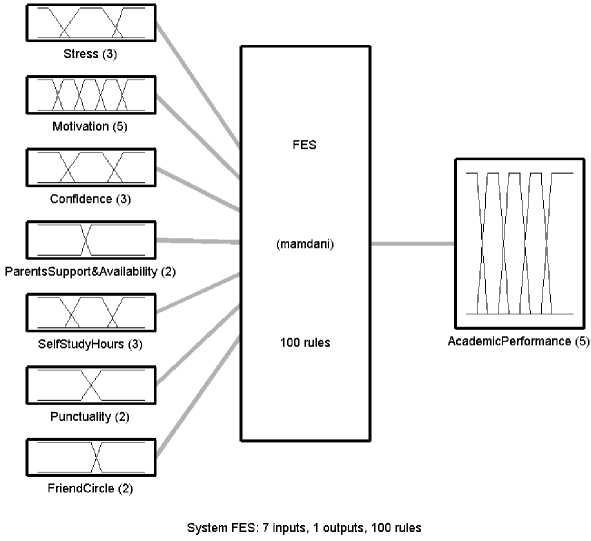
Fig. 1. Structure of fuzzy expert system
For designing the FES, seven input parameters taken are Stress, Motivation, Confidence, Parent’s support & Availability, Self study hours, Punctuality , and Friend circle . These criteria have been selected because they have a proven impact on student’s performance and are applicable in real-world learning environments. For every parameter, a membership function is carefully designed to capture the linguistic variability seen in student’s responses. Both theoretical and empirical facts have been taken into account while choosing the membership functions. For instance, to represent the low, medium, and high degrees of stress that students experience, a trapezoidal membership function is employed in our stress modeling. This decision is made under the presumption that student stress levels would be distributed in a trapezoidal form, with the majority of students reporting moderate levels and the remaining student report low or high level. In addition, fuzzy rules are created after a thorough process of study and domain-expert interaction. Every rule is designed to show the rational relationship between input parameters and how those ties affect student’s academic performance. Thus, FES is designed in such a way that it captures the complexity of the student performance while staying intuitive and understandable to find a balance between precision and simplicity.
-
4.1 Fuzzy Expert System Framework
-
4.2 Membership Functions for the Input Factors
-
4.2.1 Stress
Fuzzy systems are also known as fuzzy rule-based system, fuzzy models, and fuzzy inference systems. This is the main unit of a fuzzy logic system. It is a knowledge-based and rule-based systems that contains descriptive IF-THEN rules created from human knowledge and experience [18].
In input factor Stress , the defined membership functions are Low, Medium , and High , as seen in Fig. 2. Equations (1), (2), and (3) provide the mathematical formulation for the same.
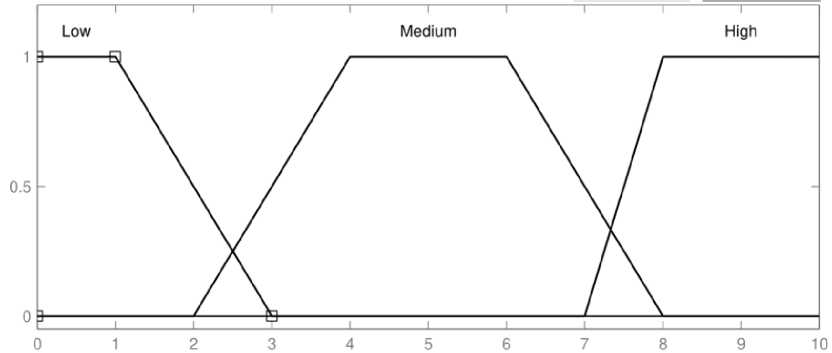
Fig. 2. Membership function of the input factor “Stress”
Low ( x )=
{1, v 2
if 0≤ X <1
if 1≤ x <3
Medium ( x )=
, {1, | 8-x 2
,
,
if 2≤ X <4 if 4≤ x <6 if 6≤ x <8
Hig ℎ( x )= {8- x.
if 7≤ x <8 if 8≤ x <10
-
4.2.2 Motivation
Motivation has a significant impact on student’s performance. Five fuzzy membership functions - VeryLess, Less, Average, High, and VeryHigh - are used to define it in this study. These sets are graphically depicted in Fig.3 whereas (4), (5), (6), (7), and (8) show their corresponding mathematical formulations.
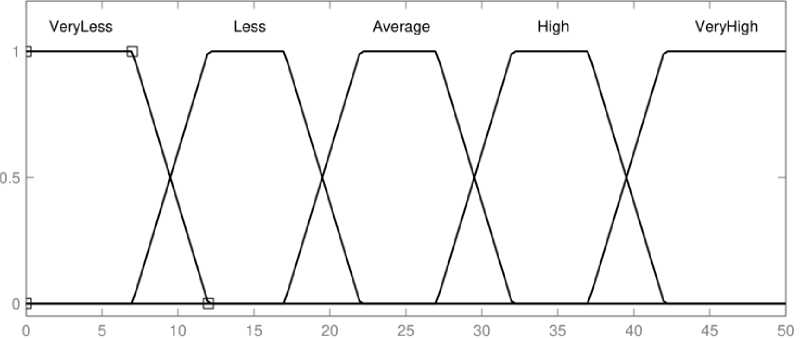
Fig. 3. Membership function of the input factor “Motivation”
VeryLess ( x )=
{1 1, - ,
if 0≤ x <7
if 7≤ x <12
( ^T , if 7≤ x <12
Less ( x )= ] 1, if 12≤ x <17
{22—X , if 17≤ x <22
f^ , if 17≤ x <22
Average ( x )= ] 1, if 22≤ x <27
32 —X , if 27≤ x <32
Hig ℎ( x )=
(— , {1, | 42-X 5
,
,
^27≤ X <32 if 32≤ x <37 if 37≤ x <42
VeryHig ℎ( x )=
{
1, ,
if 37≤ x <42
if 42≤ x <50
-
4.2.3 Confidence
Many students struggle academically, but for some, it has very little to do with their ability level. Academic achievement of students can be significantly impacted by their Confidence . The three fuzzy membership functions that make up this input factor are Less, Medium , and High which are depicted in Fig. 4. The mathematical expressions for these membership functions are provided by (9), (10), and (11) in that order.
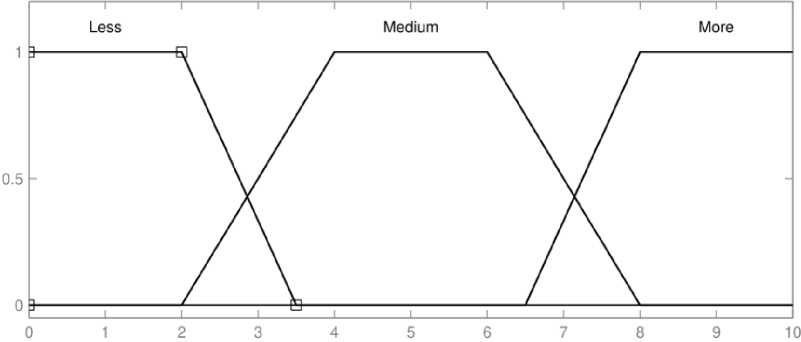
Fig. 4. Membership function of the input factor “Confidence”
1, if 0≤ x <2
Less ( x )= {3- ․ ^ , if 2≤ x <3․5 (9)
— , if 2≤ x <4
1, if 4≤ x <6 (10)
, if 6≤ x <8
{ ․ 5 T z г
, if 6․5≤ x <8
․
1, if 8≤ x <10
-
4.2.4 Parent’s Support & Availability
Parent’s support & availability are crucial factors in the life of any student. The two fuzzy membership functions Yes and No are used to build this input variable, as shown in Fig. 5 & (12) and (13), respectively, provide the mathematical definition of these membership functions.
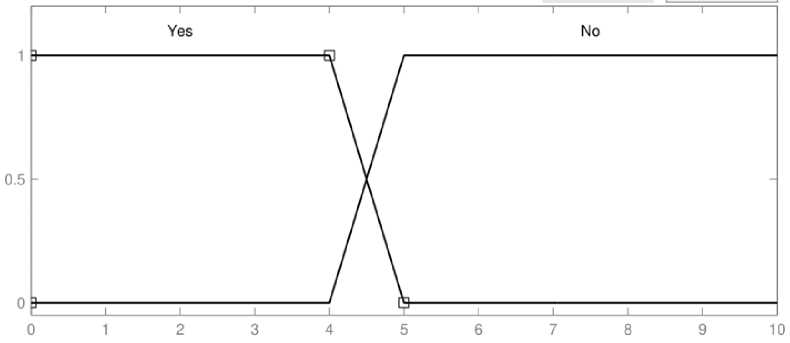
Yes ( x )=
1, if 0≤ x <4
{5- X , if 4≤ x <5
( X -4, if 4≤ x <5 No (x)= {1, - , if 5≤ x <10
-
4.2.5 Self Study Hours
This input factor self study hours has three fuzzy membership functions - Less, Average , and More as displayed in Fig. 6, & the mathematical formulation of these membership functions is given by (14), (15), and (16) respectively.
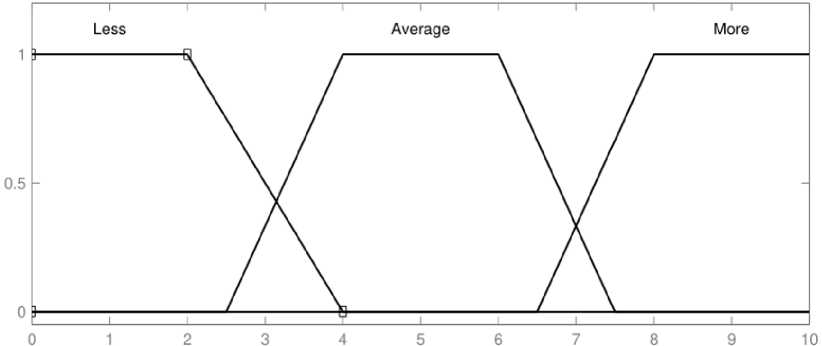
Fig. 6. Membership function of the input factor “Self study hours”
1, if 0≤ x <2
Less ( x )= {^ , if 2≤ x <4
{ ․ 5 n r .
, if 2․5≤ x <4
i․5
1, if 4≤ x <6․5
f — ․ - , if 6․5≤ x <8
Мот c ( x )= ․ ,
1, if 8≤ x <10
-
4.2.6 Punctuality
Punctuality is a crucial quality for success in life. As illustrated in Fig. 7, this input factor is constructed with two fuzzy membership functions, Yes and No . The mathematical expressions for these membership functions are provided by (17) and (18), respectively.
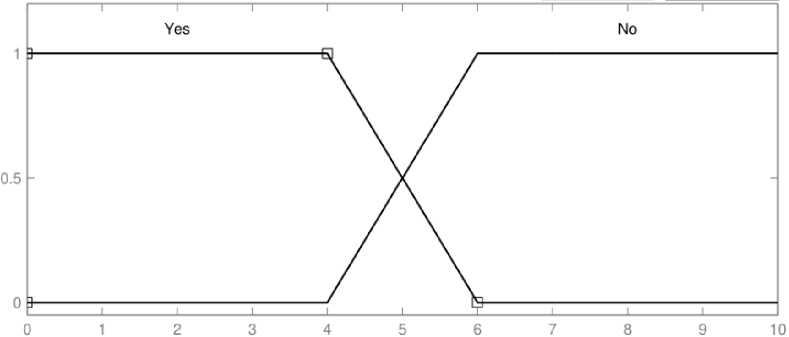
Fig. 7. Membership function of the input factor “Punctuality”
Yes ( x )=
1, if 0≤ x <4
{^ , if 4≤ x <6
( ? , if 4≤ x <6
1, if 6≤ x <10
4.2.7 Friend Circle
Another crucial element that has a significant impact on student’s performance is their Friend circle . As seen in Fig. 8, this input factor is built with two fuzzy membership functions: Good and Bad . Equations (19) and (20) provide the mathematical expressions for these membership functions, respectively.
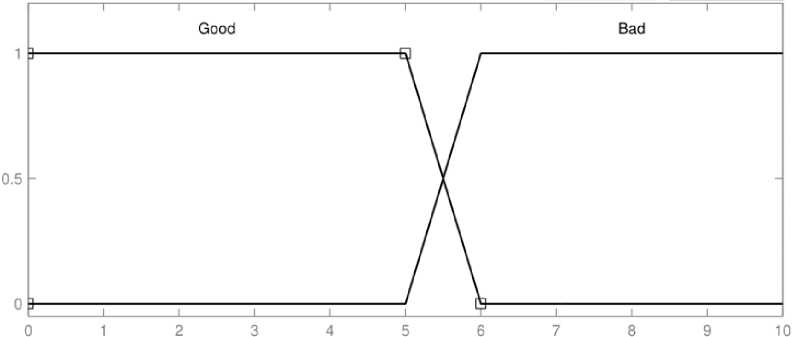
Fig. 8. Membership function of the input factor “Friend Circle”
()=
1, 0≤ <5
6- , 5≤ <6
()= { -
5≤ <6
6≤ <10
-
4.3 Membership Functions for the Output Factors
Five fuzzy membership functions are modeled for the output variable Academic performance : Poor, Average, AboveAverage, Good , and Excellent . When a variable’s value falls between 0 and 2, it is seen to be performing poorly. A variable’s performance is deemed average if its value falls between 1 and 4. When a variable’s value falls between 3 and 6, it indicates above-average performance. A variable is seen to be performing well if its value falls between 5 and 8. Outstanding performance is defined as the variable’s value falling between 7 and 10. These membership functions are represented mathematically in (21), (22), (23), (24), and (25), respectively, and are illustrated in Fig. 9.
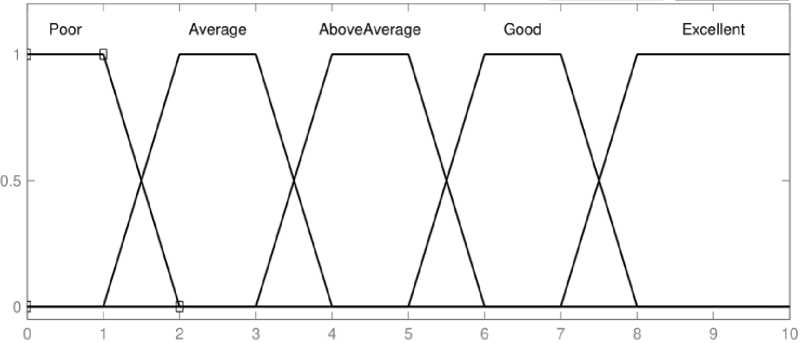
Fig. 9. Membership function of the output factor “Academic performance”
1, 0≤ <1
()= {2- , 1≤ <2
-1, 1≤<2
()= 1, 2≤<3
4- , 3≤<4
-3, 3≤<4
()= 1, 4≤<5
6- , 5≤<6
{ -5, 5≤<6
1, 6≤<7
8- , 7≤<8
()=
{1, -7,
7≤ <8
8≤ <10
-
4.4 Fuzzy Rule Set
The input factors Stress, Motivation, Confidence, Parent’s support & availability, Self study hours, Punctuality , and Friend circle are consisting of 3, 5, 3, 2, 3, 2, and 2 membership functions respectively whereas output factor Academic performance is designed with five membership functions. Therefore, a total of 5400 (3 X 5 X 3 X 2 X 3 X 2 X 2 X 5) fuzzy rules are possible for determining academic performance. In this study, 100 rules are designed based on data collected from the students. It is noteworthy that data is collected from the students by performing a survey. A few of rules are given below.
1. If (Stress is Low) and (Confidence is Less) then (Academic Performance is Poor)
2. If (Stress is Medium) and (Friend Circle is Good) then (Academic Performance is Good)
3. If (Punctuality is Yes) and (Friend Circle is Good) then (Academic Performance is Excellent)
4. If (Stress is Low) and (Motivation is Less) and (Confidence is Less) and (Parent’s Support and Availability is Yes) and (Self Study Hours is Less) and (Punctuality is Yes) and (Friend Circle is Good) then (Academic Performance is Average)
5. If (Stress is Medium) and (Motivation is Average) and (Confidence is More) and (Parent ’ s Support and Availability is Yes) and (Self Study Hours is More) and (Punctuality is Yes) and (Friend Circle is Good) then (Academic Performance is Good)
6. If (Stress is High) and (Motivation is VeryLess) and (Confidence is More) and (Parent ’ s Support and Availability is Yes) and (Self Study Hours is Average) and (Punctuality is Yes) and (Friend Circle is Good) then (Academic Performance is Above Average)
7. If (Stress is High) and (Motivation is VeryLess) and (Confidence is Less) and (Parent ’ s Support and Availability is No) and (Self Study Hours is Average) and (Punctuality is Yes) and (Friend Circle is Bad) then (Academic Performance is Poor)
4.5 Defuzzification
5. Results and Discussions
A fuzzy set is obtained after calculating the fuzzy rules by FES with the support of membership functions. Then, this fuzzy set is reduced to a single value that serves as, essentially, the best representative of the fuzzy set. This process is called defuzzification. In this study, the developed FES uses the Centroid Method (CM) [19], Bisector Method (BM) [20], and Mean of Maxima (MOM) method for defuzzification.
MATLAB R2013a version is used to run the proposed expert system on a personal computer with a 12th Gen Intel Core (TM) i5 @ 2.00 GHz and 16 GB RAM. It has taken various external factors to check their influence on the academic performance of students. Mamdani fuzzification system has been used with three distinct defuzzification techniques namely the centroid method, bisector method, and mean of maxima to check their impact. A sensitive analysis has been done by varying the values of input factors and checking the robustness of various defuzzification techniques. Output obtained from all three techniques using a distinct set of inputs has been tabulated in Table 1. One illustration is that when Stress is Medium , Motivation is Average , Confidence is Medium , Self study hours are Average , Friend circle is Good , Parent’s support and availability & Punctuality are Yes then BM provides Good whereas CM & MOM provide AboveAverage results. Similarly, when Stress is High , Motivation is VeryLess , Confidence is Less , Self study hours are Less , Friend circle is Bad , Parent’s support and availability & Punctuality is No then all three techniques provides Poor results. Thus, indicating that how CM, BM, and MOM all are performing well in analyzing the student’s academic performance on the basis of external factors.
For a deeper understanding of the results, statistical analysis is tabulated in Table 2. The significance of mean denotes the middle point or “ average ” of the collection of data whereas standard deviation defines the degree of variation or dispersion of any set of values. In Table 2, the mean of 5.533 shows that the numbers 5.16, 6, and 5.44 are mostly centered around 5.53 whereas the standard deviation of 0.43 shows the average degree of divergence of the data set’s values from the mean (5.53). In this case, the standard deviation of 0.43 is comparatively minimal in relation to the mean, indicating that the data is consistent and that the values are reasonably close to the average.
These results have practical implications in that they can help educators recognize and address the variables that have a major influence on student’s performance. A few specific suggestions could be to put stress management support programs into place, mentor or counsel students to help them become more motivated and self-assured, encourage parental involvement, to promote effective study habits, to stress the value of punctuality, and to create a positive peer environment. These suggestions can be modified to fit the requirements and available resources of certain organizations.
Table 1. Result analysis
|
Input Factors |
Defuzzification Methods (Output) |
||||||||
|
ST |
MT |
CO |
PS |
SSH |
PU |
FC |
CM |
BM |
MOM |
|
5 (Medium) |
25 (Avg) |
6 (Medium) |
3.5 (Yes) |
5 (Avg) |
3.8 (Yes) |
4 (Good) |
5.16 (Above Avg) |
6 (Good) |
5.44 (Above Avg) |
|
9 (High) |
35 (Very High) |
9 (More) |
2 (Yes) |
1 (Less) |
7 (No) |
7 (Bad) |
1.75 (Poor) |
1.8 (Poor) |
1.5 (Poor) |
|
6 (Medium) |
35 (High) |
1 (Less) |
7 (No) |
9 (More) |
2 (Yes) |
3 (Good) |
5.56 (Above Avg) |
6 (Good) |
5.84 (Above Avg) |
|
9 (High) |
5 (Very Less) |
1 (Less) |
8 (No) |
1 (Less) |
8 (No) |
8 (Bad) |
1.75 (Poor) |
1.8 (Poor) |
1.5 (Poor) |
Abbreviations used in this table are as follows:
ST: Stress, MT: Motivation, CO: Confidence, PS: Parents Support and Availability, SSH: Self Study Hours, PU: Punctuality, FC: Friend Circle, CM: Centroid Method, BM: Bisector Method: MOM: Mean of Maxima, Avg: Average
Table 2. Statistical analysis
|
CM |
BM |
MOM |
Mean |
Standard Deviation |
|
5.16 |
6 |
5.44 |
5.533333333 |
0.427707065 |
|
1.75 |
1.8 |
1.5 |
1.683333333 |
0.160727513 |
|
5.56 |
6 |
5.84 |
5.8 |
0.222710575 |
|
1.75 |
1.8 |
1.5 |
1.683333333 |
0.160727513 |
6. Conclusion
The work in this paper is focused on designing a fuzzy expert system in order to examine the academic performance of students. A lot of work is available in literature for predicting and evaluating the student’s performance of any university/ college by using data mining techniques, neural techniques and fuzzy logic. Unlike others, this work has attempted to assess the impact of external factors such as stress, friend circle etc. on the academic performance of students. To fulfil this objective, seven input variables has been taken and corresponding to them academic performance is evaluated by using Mamdani expert system. Three defuzzification methods - centroid method, bisector method, and mean of maxima methods - are used to explore student’s performance. It has been observed that the centroid method, bisector method and mean of maxima are equally effective. Any of these methods can be used to forecast academic performance, depending on the application. Real-time performance prediction of students offers a number of advantages, including early detection of students who are failing their modules and those who are in danger of dropping out, creating a brighter future for the student and enabling prompt implementation of any necessary corrective measures. The implementation of hybrid fuzzy logic approaches, which fuse fuzzy logic with neural networks and other evolutionary computational approaches, can further enhance the approach. Moreover, the system’s accuracy can be improved by utilizing advanced fuzzy logic techniques like fuzzy clustering and fuzzy cognitive maps.
Acknowledgment
-
• Ethical Approval. This research work is the author’s original work, which has not been previously published elsewhere.
-
• Competing Interests. There are no conflicts of interest to disclose.
-
• Financial Interests. The author has no relevant financial or non-financial interests to disclose.
-
• Funding. No funding was received for conducting this study.
-
• Availability of data and materials. Data sharing does not apply to this article.

